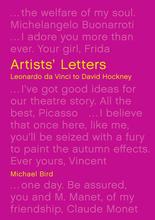More about Ad Reinhardt
- All
- Info
- Shop
Works by Ad Reinhardt

Contributor
A descendant of German immigrants to the United States, Adolph Dietrich Friedrich Reinhardt developed his own standard of artistic purity.
Reinhardt's ideas were elaborations on the ideas of Malevich and Mondrian. He learned of the two abstract artists from his studies with the art historian Meyer Schapiro at Columbia, and gradually moved away from his politically-oriented art toward a long series of black paintings, which came to define his life's work. From these influences, he developed his own ethics of personal responsibility, with the goal of protecting art from becoming an instrument for financial speculation.
In certain circles, Reinhardt's brand of art purism dominates its competitors, doing its part to promote the independence of art from finance. Reinhardt was aware that his radical stance against all symbolism, all figuration on canvas, and all collaboration with other disciplines is just not going to work for most artists, even if they agreed with him on the fundamental premise. Reinhardt's zealous opposition to symbolism is itself symbolic: as a German man born in the U.S., Reinhardt needed to dissociate himself from the volatile project of German statecraft and its dangerously effective reliance on romanticism, nostalgia, realism, nationalism, and allegory.
Despite his distaste for the ad industry, Reinhardt became an Ad himself, rather than remain an Adolph. The "one, eternal, permanent revolution in art is always a negation of the use of art for some purpose other than its own," wrote the painter, in one of his many rants against his contemporaries like the abstract expressionist and Pop Art schools, whose art was as malleable as, and often paired with, advertising copy. The conservative purist Reinhardt believed that art should always be concerned only with its own purpose as a work of art, and refuse the pressure to make itself useful outside of its own purpose. This position came from Reinhardt's globetrotting, during which he encountered Islamic and Buddhist ideas about divinity.
Writers and intellectuals have neglected the writing of Ad Reinhardt for many decades because it is a direct attack on writers and intellectuals. It's hard to appreciate something whose entire purpose is against you, and Reinhardt insists, in his many aphorisms, that, "Fine art can only be defined as exclusive, negative, absolute and timeless. It is not practical, useful, related, applicable or subservient to anything else," and that '"Reason' in art shows what art is not." Reason in art writing can be good, but it's not as memorable as something unexpected, something that comes from a deeper place than rational analysis. Ironically, Reinhardt's artworks and art writing are a hyper-rational attack on the use of reason itself, a snake eating its own tail.
Sources
- Brogowski, Leszek. Ad Reinhardt : Peinture moderne et responsabilité esthétique. Chatou, France: Les éditions de la Transparence, 2011.
- Corris, Michael. Ad Reinhardt. Reaktion Books, 2008.
- Liesbrock, Heinz. Ad Reinhardt: Last Paintings. Bottrop, Germany: Josef Albers Museum Quadrat Bottrop, 2011.
- Reinhardt, Adolph Dietrich Friedrich. "The Twelve Technical Rules." 45th annual meeting of the College Art Association at the Detroit Institute of Art, January 26, 1957.
- Schjeldahl, Peter. "Art as Art." New York Times, Feb. 15, 1976, https://www.nytimes.com/1976/02/15/archives/art-as-art-the-art-comics-a….
- Selz, Gabrielle. Unstill Life: A Daughter's Memoir of Art and Love in the Age of Abstraction. New York: W. W. Norton & Company, 2014.
Featured Content
Here is what Wikipedia says about Ad Reinhardt
Adolph Friedrich Reinhardt (December 24, 1913 – August 30, 1967) was an abstract painter and Art theorist active in New York City for more than three decades. As a theorist he wrote and lectured extensively on art and was a major influence on conceptual art, minimal art and monochrome painting.
Most famous for his "black" or "ultimate" paintings, he claimed to be painting the "last paintings" that anyone can paint. He believed in a philosophy of art he called Art-as-Art and used his writing and satirical cartoons to advocate for abstract art and against what he described as "the disreputable practices of artists-as-artists".
He was a member of the American Abstract Artists (AAA) and part of the movement centered on the Betty Parsons Gallery that became known as Abstract Expressionism. He was also a member of The Club, the meeting place for the New York School abstract expressionist artists during the 1940s and 1950s.
Check out the full Wikipedia article about Ad Reinhardt













